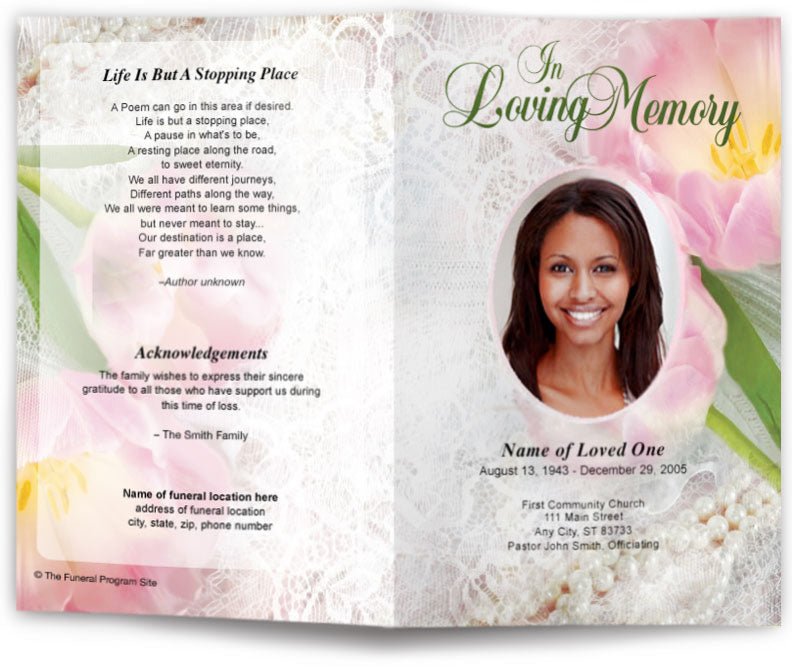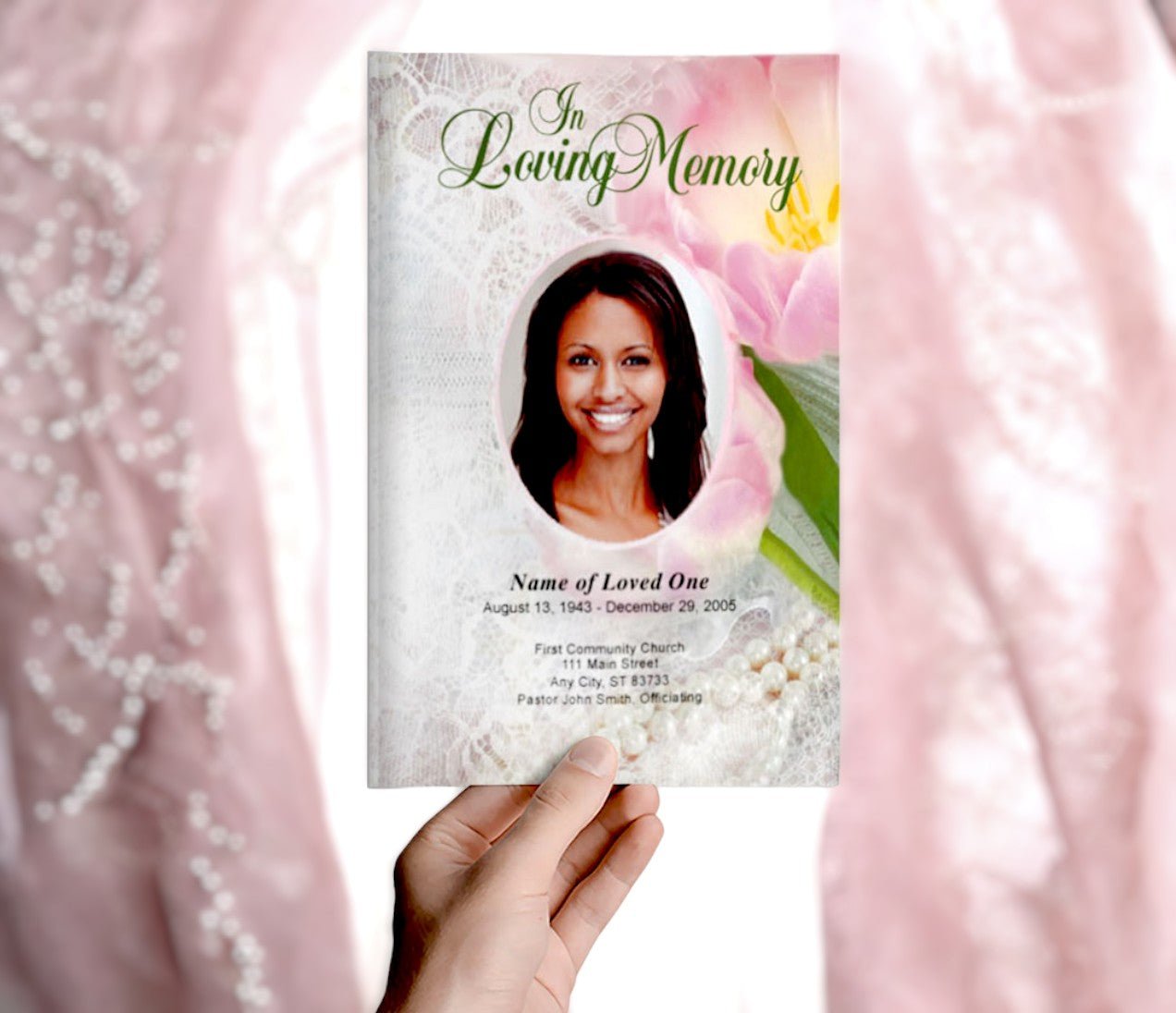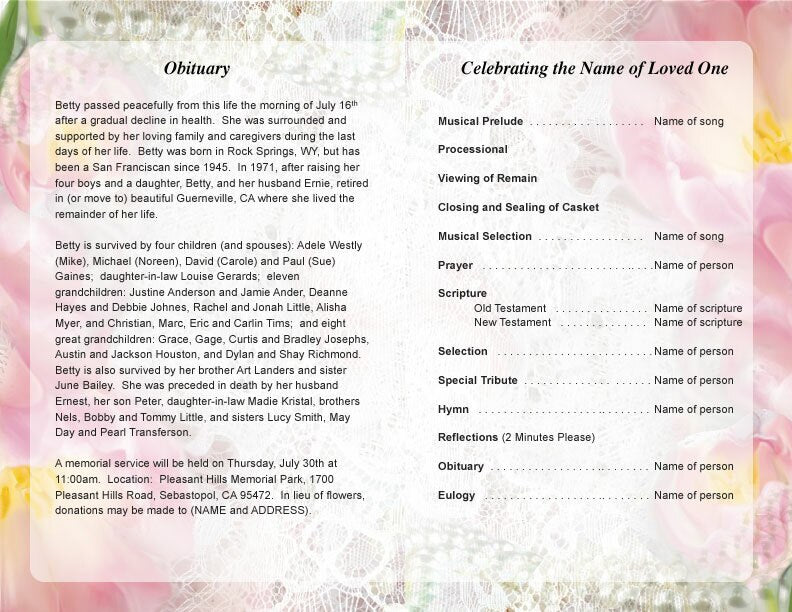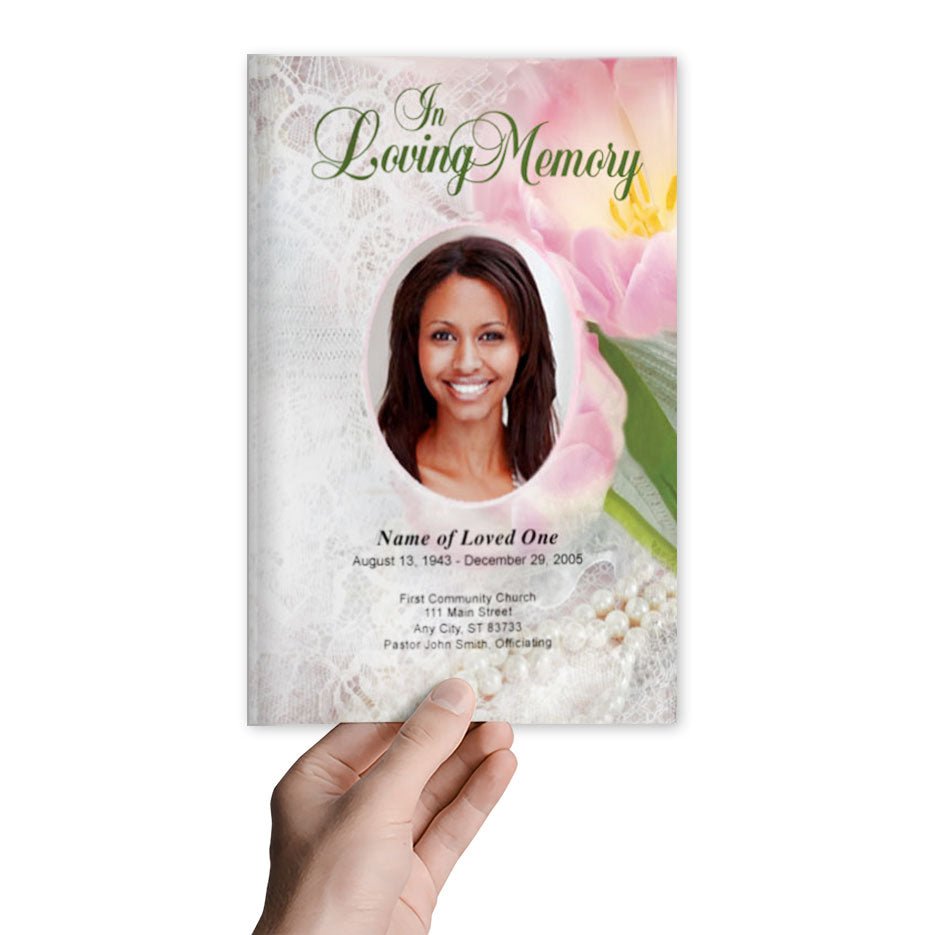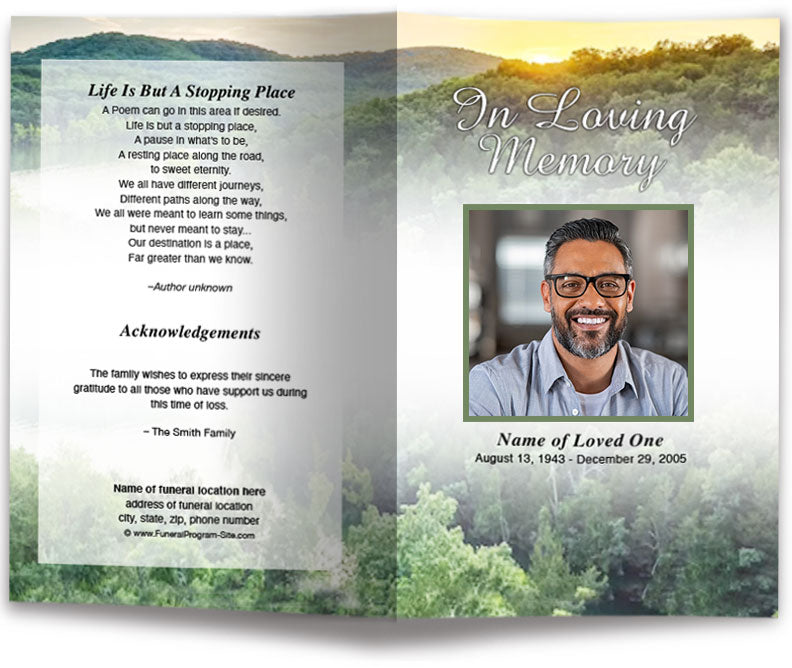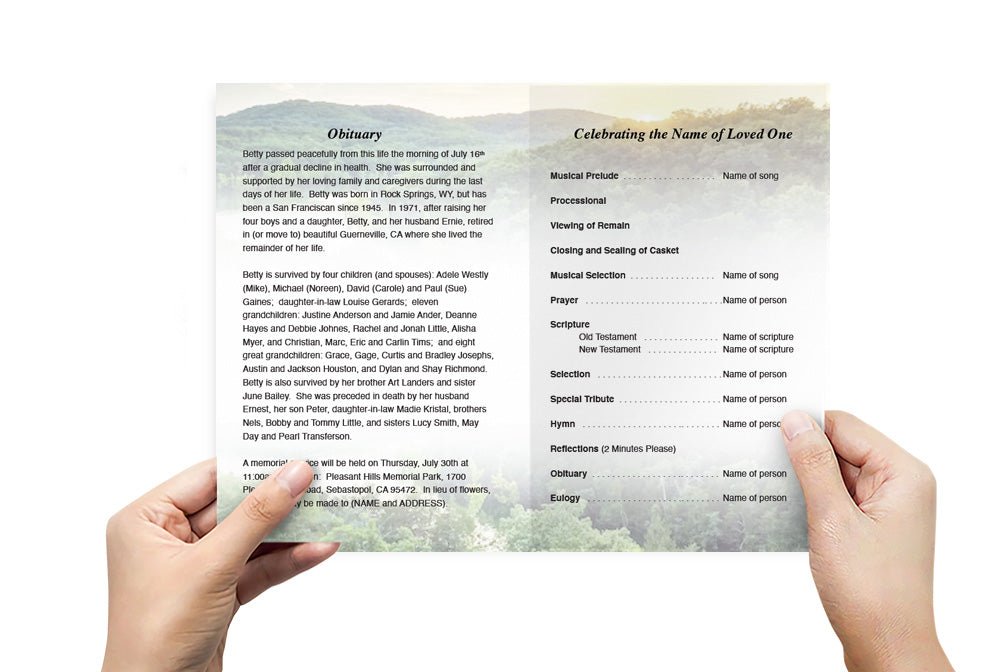The Impact of Personalization in Funeral Program Templates

Personalization has become an integral part of modern memorial services, transforming standard funeral programs into heartfelt tributes that truly reflect the essence of a loved one’s life. Funeral program templates, which offer structure and convenience, now provide endless opportunities for customization, allowing families to honor their loved ones in a meaningful and unique way. This article explores the profound impact of personalization in funeral program templates, detailing how it enhances the service, provides comfort to attendees, and creates lasting keepsakes.
Why Personalization Matters in Funeral Program Templates
Funeral program templates serve as both a practical guide for memorial services and a cherished memento for attendees. Personalization elevates these templates by incorporating elements that reflect the deceased’s personality, values, and life journey. It transforms a generic program into a one-of-a-kind tribute, evoking memories, emotions, and connections that resonate with family and friends.
1. Honoring Individuality
Personalization allows families to celebrate the unique qualities that made their loved one special. By including elements such as photos, quotes, hobbies, and favorite colors, the program becomes a vivid representation of their personality and legacy.
2. Comforting Attendees
A personalized funeral program can bring comfort to those in attendance, reminding them of the shared moments and cherished memories they had with the deceased. Seeing familiar photos, reading favorite sayings, or recognizing meaningful symbols fosters a sense of closeness and connection.
3. Creating Lasting Keepsakes
Customized programs become treasured keepsakes that family and friends can hold onto for years. Unlike standard designs, personalized templates capture the essence of a life well-lived, making them enduring reminders of love and legacy.
Ways to Personalize Funeral Program Templates
Personalization in funeral program templates can take many forms, from subtle design choices to detailed content additions. Here are key ways to make a program uniquely meaningful:
1. Incorporating Photos
Photos are one of the most powerful ways to personalize a funeral program. Include:
- Cover Photo: A high-quality image of the deceased that captures their personality.
- Photo Collages: A collection of moments from different stages of life, such as childhood, family gatherings, and special milestones.
- Thematic Photos: Images that reflect hobbies, achievements, or favorite places.
2. Adding Personal Quotes and Sayings
Including a favorite quote, scripture, or saying adds a personal and emotional touch. This could be a line the deceased often said, a verse they loved, or a piece of advice they frequently shared.
3. Highlighting Hobbies and Passions
Showcase the deceased’s hobbies or passions through the design. For example:
- Nature Lovers: Use floral patterns, tree imagery, or earthy colors.
- Musicians: Include musical notes or images of instruments.
- Sports Enthusiasts: Feature team colors or sports-related graphics.
4. Using a Personalized Color Scheme
Incorporate the loved one’s favorite colors into the program design. Soft pastels, vibrant tones, or neutral hues can be used to create a cohesive and meaningful aesthetic.
5. Including Life Timelines
A timeline of key life events provides a visual representation of the deceased’s journey. Pairing this with photos or captions can make the program even more engaging and personal.
6. Writing Detailed Obituaries
An obituary is a central component of any funeral program. Writing a detailed and heartfelt obituary allows families to share the story of their loved one’s life, highlighting achievements, relationships, and qualities that made them unique.
7. Adding Interactive Features
For modern memorials, include interactive elements like QR codes that link to:
- A digital photo album.
- A memorial video or tribute.
- A donation page for causes the deceased supported.
Design Tips for Personalized Funeral Program Templates
1. Choose a Template That Matches the Tone
Select a template that aligns with the tone of the service—traditional, celebratory, spiritual, or modern. The layout and design should provide a solid foundation for personalization.
2. Use High-Quality Images
Ensure all photos are high resolution to maintain clarity and professionalism. Avoid using blurry or pixelated images that can detract from the program’s quality.
3. Balance Content and White Space
While personalization is important, avoid overcrowding the design. Use white space strategically to create a clean and organized layout that is easy to read.
4. Select Legible Fonts
Choose fonts that are both elegant and legible. Pair decorative fonts for headings with simple serif or sans-serif fonts for body text to maintain readability.
5. Incorporate Subtle Themes
Themes should enhance the program without overpowering the content. Use subtle patterns, borders, or icons that align with the deceased’s personality or interests.
Benefits of Personalization for Families and Attendees
1. Emotional Connection
Personalized programs create a deep emotional connection between the attendees and the deceased. They serve as a reminder of shared moments, creating a sense of closeness and reflection.
2. Celebrating Legacy
Customization ensures that the program highlights the deceased’s legacy in a way that resonates with everyone present. It provides a comprehensive and heartfelt tribute to their life.
3. Providing Comfort
Personalized elements like photos, quotes, and favorite colors bring comfort to grieving families and friends. They evoke memories and offer a sense of peace during the service.
4. Enhancing the Service Experience
A well-designed, personalized program enhances the overall experience of the memorial service. Attendees feel engaged and connected, making the tribute more meaningful and memorable.
5. Creating a Timeless Keepsake
Customized funeral programs become cherished keepsakes that families and friends can revisit long after the service. They serve as tangible reminders of a loved one’s impact and legacy.
Modern Tools for Personalizing Funeral Program Templates
1. Online Design Platforms
Platforms like Canva, Adobe Spark, and Visme offer customizable templates that can be tailored to reflect the deceased’s personality and legacy.
2. Professional Printing Services
Companies like The Funeral Program Site provide a range of editable templates and professional printing options, ensuring high-quality results.
3. DIY Software
For those who prefer to design their own programs, tools like Microsoft Word, Publisher, and Google Docs offer templates that are easy to customize.
4. Independent Designers
Hiring a freelance designer or purchasing templates from platforms like Etsy can result in unique and artistic funeral programs.
Conclusion
Personalization has transformed funeral program templates from functional documents into meaningful tributes that celebrate a loved one’s life and legacy. By incorporating elements like photos, quotes, hobbies, and themes, families can create programs that capture the essence of the deceased while offering comfort and connection to attendees. Whether through a traditional design, a modern digital format, or a creative keepsake, personalization ensures that each program becomes a timeless reminder of the love and memories shared. Thoughtfully designed and carefully crafted, a personalized funeral program serves as a beautiful way to honor a life well-lived and keep their memory alive for years to come.










